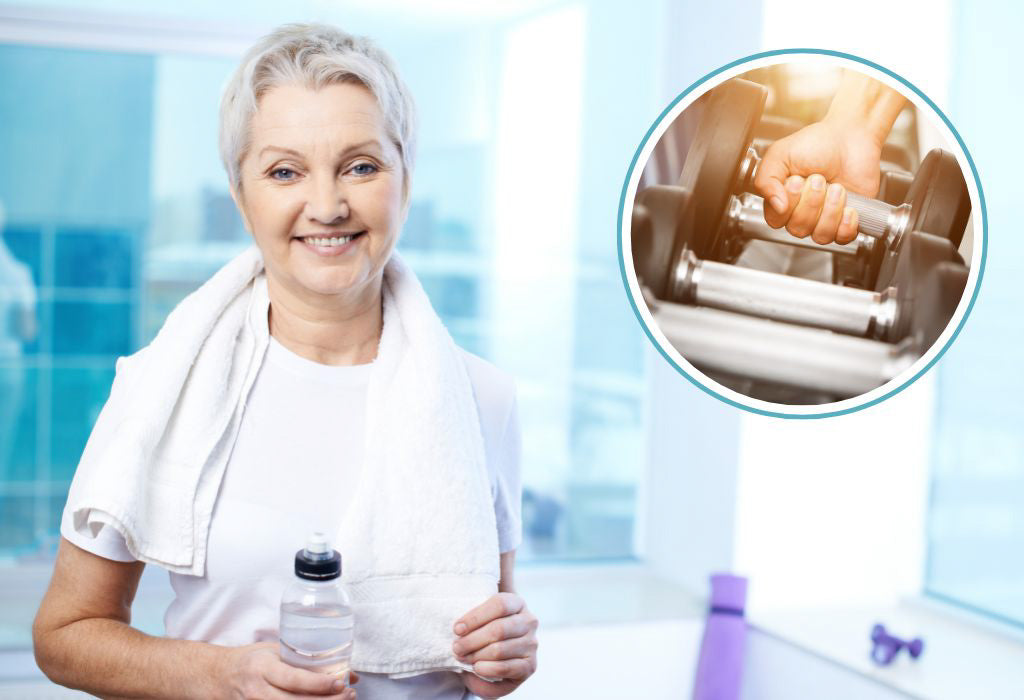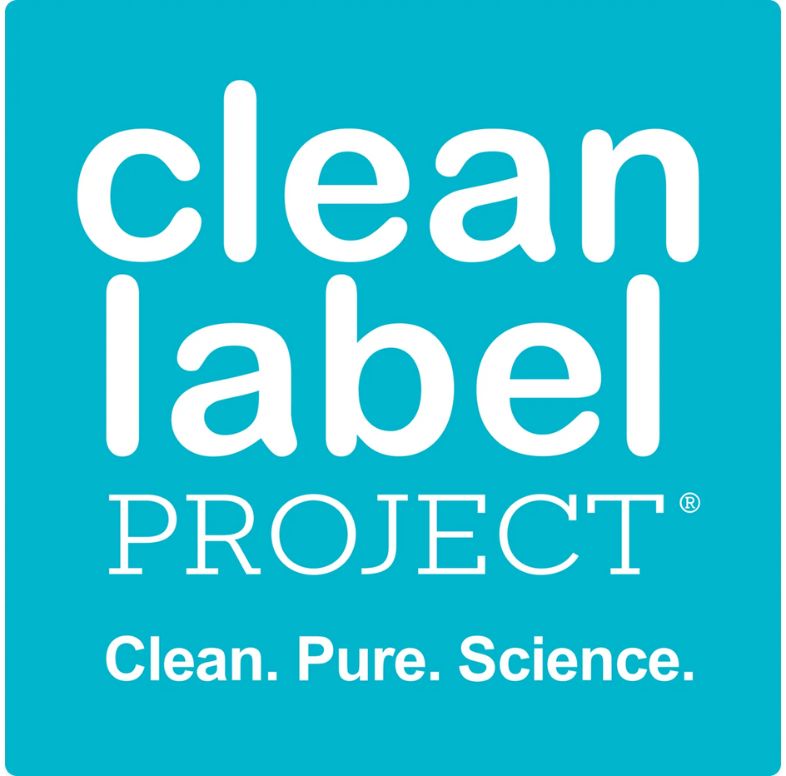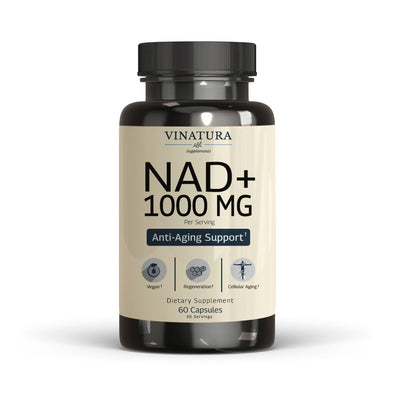
Best Exercise for Anti-Aging: How Supplements Can Help
All of us naturally want to stay youthful and healthy for as long as possible. While genetics play a role, lifestyle choices are a major factor in slowing down the aging process. According to Harvard Health Publishing, only about 25% of lifespan variation is due to genetics, while the remaining 75% is largely influenced by lifestyle choices.
In addition, proper nutritional support is essential in optimizing the effects of anti-aging workouts. In this article, let’s explore which types of physical activity can help slow aging and how dietary supplements can support this process.
Before exploring further, please read the disclaimer located at the end of this webpage.
Key Takeaways
- Exercise supports cellular health, muscle strength, and metabolic balance as we age.
- Strength, cardio, HIIT, and flexibility exercises may promote long-term physical function.
- Recovery, sleep, and consistency are key to sustainable fitness benefits.
- Certain supplements may help maintain performance and support healthy aging processes.
How Exercise Slows the Aging Process

To begin with, it is important to understand that exercise influences multiple biological aspects related to aging. One of them is the telomeres—protective caps at the ends of chromosomes that shorten as we age.
In simple terms, when telomeres become shorter, chromosomes lose stability, negatively affecting the process of cell division. When these telomeres shrink, cells divide more slowly or may stop dividing altogether.
A comprehensive review found that individuals who engage in regular exercise tend to experience less oxidative stress at the cellular level and have longer average telomeres compared to those who are sedentary. In other words, their cells show fewer signs of damage (Arsenis, et al. 2017).
Beyond that, exercise impacts several areas of health, including muscles, bones, metabolism, the brain, and mental well-being.
Starting with muscle health, after age 30, we naturally lose about 3–5% of muscle mass per decade without intervention. This phenomenon is known as sarcopenia (Preserve Your Muscle Mass - Harvard Health).
Resistance training, such as lifting weights, can increase muscle mass even in older adults. A meta-analysis reported that middle-aged men aged 50–83 gained an average of 1.1 kg (~2.4 lbs) of lean muscle after completing a resistance training program (Peterson, et al. 2011).
Due to the loss of muscle mass, resting metabolic rate (RMR)—the amount of energy burned at rest—typically declines by 1–3% per decade as we age (Preserve Your Muscle Mass - Harvard Health).
This decline may lead to excess energy being stored as body fat. However, increasing muscle mass through training helps raise RMR.
In other words, exercise supports metabolic health, weight management. A study demonstrated that men aged 50–65 who participated in a 16-week resistance training program increased their RMR by approximately 7.7% due to gains in muscle mass (Pretley, et al. 1995).

Bone strength also declines by around 1% per year after the age of 40 (Slowing Bone Loss with Weight-Bearing Exercise - Harvard Health). However, weight-bearing activities like lifting weights, walking, or running apply mechanical stress to bones, stimulating calcium retention and increasing bone density.
On a cellular level, specifically within mitochondria, exercise also has beneficial effects. Mitochondria, often called the "powerhouses" of the cell, tend to decline with age. In one study, mitochondrial capacity in older individuals improved by up to 69% after HIIT—surpassing the 49% increase observed in younger participants.
This suggests that exercise can partially reverse the decline in cellular energy, helping muscles and other organs function more efficiently (Robinson, et al. 2017). Additionally, exercise enhances insulin response, which supports better glucose regulation.
In conclusion, physical activity supports healthy aging through multiple mechanisms: protecting telomeres, preserving muscle and bone, maintaining metabolic function and brain performance, and enhancing mitochondrial activity.
All of these factors contribute to prolonged health and youthfulness—something we all hope to preserve for as long as possible.
Top 5 Anti-Aging Exercises Backed by Science
There’s no denying that exercise remains one of the most effective ways to slow down the biological aging process that eventually affects us all. Let’s take a closer look at a few types of workouts that have been scientifically studied for their potential to extend lifespan and enhance quality of life.
Strength Training: The #1 Anti-Aging Exercise
As mentioned earlier, after age 30, we begin to lose lean muscle mass each decade. This loss not only reduces strength but also impacts our metabolic rate and overall control over bodily movement—leading to increased risk of falls and related injuries.
That’s why strength training, also known as resistance exercise, is considered the top choice for preserving muscle and supporting bone health. In fact, these exercises are quite familiar and commonly practiced. Examples include:
- Dumbbell Workouts: Squats with dumbbells, shoulder presses, lat pulls
- Resistance Bands: Chest pulls, overhead extensions, light deadlifts
- Bodyweight Exercises: Push-ups, planks, bodyweight squats
Depending on one’s condition and experience, training frequency and intensity—such as reps and weekly sessions—will vary. However, a simple principle can be followed: start light, then gradually increase both difficulty and frequency.
Current general recommendations for resistance training (RT) range from 2 to 5 days per week, based on fitness level (Ralston, et al. 2018). Each session might include 6–8 exercises, with 2–3 sets of 8–12 repetitions per set. Recovery is essential, as muscles need time to repair and grow.
Experienced individuals on platforms like Reddit also share that training three times per week is effective—so long as you remain honest with yourself and commit to consistent effort to enjoy long-term benefits.*
Aerobic/Cardio
Cardio-based workouts primarily support cardiovascular health, enhance metabolism, and facilitate faster fat burning.
Some popular cardio activities include brisk walking, swimming, and cycling—all of which promote blood circulation. Additionally, aerobic fitness programs often incorporate upbeat music to make the experience more enjoyable.
Suggested cardio options:
- Brisk Walking: 30 minutes per session, 3–5 days a week
- Swimming or Cycling: Moderate intensity, 2–3 sessions per week
- Dancing/Zumba: A fun blend of cardio and full-body movement
A helpful tip for gauging your cardio intensity is to observe your breathing—if you find it somewhat difficult to hold a conversation continuously, your heart rate is likely in the moderate to high range. This signals that your body is burning calories and stimulating metabolic activity.
High-Intensity Interval Training (HIIT)

HIIT, or High-Intensity Interval Training, consists of short bursts of very intense activity followed by brief rest or recovery periods. This method is considered one of the most time-efficient ways to support anti-aging benefits.
One study reported that HIIT increased mitochondrial capacity and function by up to 69% in older adults, along with improvements in insulin sensitivity and lower diabetes risk (Robinson, et al. 2017).
Sample HIIT routines include:
- Sprinting Intervals: 30 seconds of fast running, followed by 90 seconds of walking, repeated
- Cycling Intervals: 20 seconds of fast pedaling, followed by 40 seconds light, repeated
- Tabata: Example movement—burpees for 20 seconds on, 10 seconds rest
Nowadays, there are countless HIIT programs available online. Vloggers such as Scott Tousignant and Schellea Fowler (Fabulous50s offer well-structured videos tailored for viewers aged 30–50, focusing on accessible and effective workouts.*
Note that due to its intensity, each HIIT session should last around 15–20 minutes, which is sufficient for results while avoiding excessive fatigue or dehydration.
Yoga or Pilates

Yoga and Pilates are excellent options for maintaining flexibility, mobility, postural control, and breath awareness. These practices stretch muscles, strengthen the core, and promote mental relaxation. Recent studies have shown that yoga and meditation help reduce stress, lower inflammation, and protect telomeres—supporting cellular resilience (Chen, et al. 2024).
To get started, try simple poses such as:
- Warrior Pose
- Tree Pose
- Downward Dog
- Pranayama (Breathing techniques)
Pilates, on the other hand, places more emphasis on the core muscles—especially the abs and lower back. Common Pilates exercises include plank variations, bridges, and roll-ups.
Recommended frequency for beginners is around 2–4 sessions per week, each lasting 30–60 minutes. Yoga in particular requires little to no equipment and can be done at home, making it a practical option for all age groups, especially those with sedentary routines or office-based lifestyles.
Balance & Mobility Exercises

As you may know, balance and mobility tend to decline significantly after age 40–50. Incorporating specific exercises can enhance neuromuscular coordination, reduce fall risk, and maintain movement efficiency. Suggested exercises include:
- Standing Leg Raise: Lift one leg while standing, hold for 30 seconds per side
- Heel-to-Toe Walk: Walk in a straight line, heel touching toe
- Tai Chi or Chair Yoga: Gentle options suitable for older adults
- Stretching for Hips, Lower Back, Ankles: Hold each stretch for 20–30 seconds
These exercises can be performed almost anywhere and at any time, without the need for a strict schedule. You might integrate them before bedtime, after waking up, or following long hours at a desk.
However, always focus on steady breathing and slow, controlled movements, avoid rushing or forcing your body into difficult positions.
How Often Should You Exercise to Stay Young?
When it comes to anti-aging through physical activity, consistency should always be prioritized over intensity.
You don’t need to train excessively hard—but you do need to maintain a regular weekly workout schedule that suits your physical condition and includes appropriate rest and recovery. This helps avoid overexertion, injury, or counterproductive effects.
For example, if you are of moderate fitness level, aiming to combine all exercise types discussed earlier while preserving sufficient recovery time and keeping daily sessions between 30 to 60 minutes, here’s a sample weekly schedule for reference:
|
Day |
Suggested Activity |
Duration |
|
Monday |
Full-body strength training |
~45 minutes |
|
Tuesday |
Light cardio (brisk walking, swimming) |
~30 minutes |
|
Wednesday |
Yoga / Stretching |
~30–40 minutes |
|
Thursday |
Upper-body strength training |
~40 minutes |
|
Friday |
Light HIIT or moderate cycling |
~20–30 minutes (not too intense) |
|
Saturday |
Balance + flexibility exercises |
Flexible |
|
Sunday |
Rest / Relaxed walking |
Flexible |
One common and serious misconception is thinking that “the more you exercise, the younger you stay.” In reality, proper sleep, muscle recovery, and hormonal regulation are the real factors that determine how well your body adapts and benefits from training.
In short, these elements decide the effectiveness of your workouts. So always aim to get 7–8 hours of sleep and include 1–2 rest days per week for full-body recovery.
However, if you’re short on time, even walking just three times a week can yield noticeable health benefits.
In a podcast on brain health, Dr. Wendy Mizuki referred to a study where adults over age 65 were associated with a 30% lower risk of Alzheimer’s disease simply by walking at least 20 minutes per session, three times per week. That’s something almost anyone can do to support their health.

Exercise, Hormones, and Longevity: The Hidden Link
When we look deeper, we uncover a critical link between exercise, hormonal function, and longevity. The dream of “staying healthy and youthful” is closely tied to the endocrine system—something that can be significantly influenced by physical activity. Specifically:
Testosterone and Growth Hormone (GH): Levels of both hormones decline with age, resulting in reduced muscle and energy. However, both HIIT and strength training have been shown to stimulate these hormones.
For example, a study involving older men found that six weeks of HIIT increased total testosterone levels from approximately 13.2 to 15.4 nmol/L (about 17% increase) (Hayes, et al. 2017). In other words, exercise stimulates your body to produce more “youthful” hormones that help support muscle and bone mass.
Insulin: Physical activity improves insulin sensitivity, helping the body regulate blood sugar more effectively. Studies show that HIIT can reduce insulin resistance and thereby lower the risk of type 2 diabetes (Ryan, et al. 2020).
Cortisol and other hormones: It’s well established that exercise positively affects cortisol levels and boosts production of mood-enhancing chemicals like endorphins and serotonin—contributing to better mood and improved sleep (More Evidence That Exercise Can Boost Mood - Harvard Health).
In short, training “tunes” your hormonal profile in ways that benefit health and longevity. That means you can maintain muscle, bone strength, stable blood sugar, and a clear, calm mind—even as your biological age advances.

Best Anti-Aging Workouts for Different Age Groups
As discussed, each stage of life brings changes in strength, stamina, and recovery ability. Therefore, exercise plans should adapt accordingly to remain both effective and sustainable.
Ages 30–40:
This is a golden window for building strength and endurance. You can follow structured gym programs, push your limits with high-intensity routines (HIIT, heavier resistance training) 3–4 times per week, and still recover well. Prioritize foundational movements like push-ups and squats to establish a solid muscle base before entering your 40s.
Ages 40–50:
At this point, the focus should shift toward maintaining muscle mass while minimizing injury risk. Incorporate compound movements that engage multiple muscle groups, maintain relatively high intensity, but allow longer rest between sets.
Emphasize recovery through stretching, massage, and introduce more flexibility and balance exercises to keep joints resilient.
Ages 50 and beyond:
Here, the emphasis is on preserving functional movement and reducing the risk of falls.
Opt for light aerobic sessions (walking, moderate cycling), gentle resistance training (light weights or bands), and plenty of stretching and balance exercises (tai chi, gentle yoga). If you feel joint pain or lack energy, reduce intensity and prioritize mobility work.
Always remember: you know your body better than anyone else. Listening carefully to how you feel is the key to customizing your exercise routine for the best long-term results.
Combine Movement with Lifestyle for Long-Lasting Youth
Anti-aging isn’t solely about exercise—it also requires a healthy lifestyle and proper nutrition. Experts from Harvard emphasize that the keys to longevity include a balanced diet, regular physical activity, and a positive lifestyle.
Specifically, staying hydrated and following a diet rich in vegetables, fruits, nuts, and fatty fish (high in omega-3) while limiting saturated fats can supply powerful antioxidants that protect cells.
In addition, it’s crucial to get sufficient rest—7 to 9 hours of sleep per night is recommended. Other golden rules include not smoking, as tobacco damages the heart, lungs, and skin, and limiting alcohol consumption.
Alongside lifestyle habits, supplementing with essential nutrients can further help preserve youthfulness over time. The use of dietary supplements for healthy aging and longevity has seen significant growth.
One survey of over 30,000 adults found that those who maintained a well-balanced diet combined with appropriate supplements had a 12–15% lower all-cause mortality rate, particularly in groups using antioxidants and cellular metabolism support (Kantor, et al. 2016).
In addition, keeping a positive mindset and nurturing healthy social connections contributes to a vibrant and youthful life.
In summary, beyond exercise, maintaining healthy habits such as balanced eating, quality sleep, joyful spirit, and antioxidant intake (from vitamin C, E, polyphenols, etc.) are essential for life-long vitality. But remember—discipline only works when it’s sustainable. Your plan doesn’t need to be perfect, but it must be realistic and repeatable.
Boost Your Workout Performance with Anti-Aging Supplements

To explore how supplements support longevity and anti-aging, several ingredients have been studied for their potential to enhance both physical performance and cellular resilience.
Notable anti-aging supplements include:
NAD⁺, NMN, NMNH: NAD⁺ (Nicotinamide Adenine Dinucleotide) plays a core role in energy metabolism and DNA repair, which are essential for slowing the aging process (Uddin, et al. 2016). NMN and NMNH are precursors that help increase natural NAD⁺ levels in the body.
Collagen Peptides: As the main component of skin, tendons, and joints, collagen contributes to skin elasticity and joint recovery.
Supplementing with hydrolyzed collagen has been shown to improve skin moisture and elasticity while reducing fine lines. It also supports joint and tendon health, especially helpful for those with post-exercise joint discomfort (Hend Al-Atif, et al. 2022).
GlyNAC: A blend of Glycine and N-Acetylcysteine, GlyNAC boosts glutathione—an important internal antioxidant.
A 2021 study showed that supplementing with GlyNAC for 24 weeks in adults over 70 led to increased muscle mass, improved walking speed, better mitochondrial function, and reduced chronic inflammation markers.
The results were further supported by improvements in methylation, reduced insulin resistance, and elevated glutathione levels (Kumar, et al. 2021).
Berberine: A natural alkaloid that activates AMPK, a key enzyme for cellular metabolism and aging. One of its most recognized uses is in supporting cardiovascular health, especially blood sugar management.
Berberine may help modulate carbohydrate absorption and support insulin balance, and regulate blood glucose—making it a practical choice for those managing high blood sugar or hypertension (Zhou, et al. 2008).
Other promising anti-aging options include TMG, omega-3s (DHA/EPA), green tea extract, resveratrol, and curcumin, each supporting oxidative balance and healthy aging mechanisms.
If your goal is to enhance workout outcomes while supporting anti-aging, consider the following:
Creatine, HMB: Creatine monohydrate is one of the most well-studied and effective supplements for increasing lean muscle mass, strength, and even cognitive support in older adults.
HMB (β-Hydroxy β-Methylbutyrate), a leucine metabolite, helps slow muscle degradation and boosts recovery, especially in less active seniors.
High-Quality Protein (Whey/Plant-Based): Provides essential amino acids for muscle building—especially important after age 40, when protein synthesis efficiency starts to decline.
Hormonal and Energy Support:
- Tongkat ali (for men),
- Fadogia (for women),
- BCAAs,
- Vitamin D,
- Calcium—these support hormone regulation, recovery, and metabolic health.
Conclusion
Aging may be inevitable but that doesn’t mean we are powerless against it. As explored in this article, physical activity forms the foundation of anti-aging, offering unmatched benefits: improved muscle strength, stronger bones, hormone regulation, enhanced brain function, and overall better quality of life.
Regardless of your age, by building consistent habits that blend cardio, strength, mobility, and flexibility, you may find yourself reclaiming the vitality of your twenties. The journey starts with one step, what matters most is that you keep going.
Testimonial Disclaimer
*The testimonials presented on this website are provided by individuals based on their personal experiences with our products. These testimonials represent individual opinions and experiences, which may not be typical or applicable to all users of our products. Results may vary depending on a variety of factors, including individual health, lifestyle, and adherence to product usage instructions.References
- [1] Arsenis, Nicole C., et al. “Physical Activity and Telomere Length: Impact of Aging and Potential Mechanisms of Action.” Oncotarget, vol. 8, no. 27, Impact Journals LLC, Mar. 2017, pp. 45008–19, https://doi.org/10.18632/oncotarget.16726.
- [2] “Preserve Your Muscle Mass - Harvard Health.” Harvard Health, 19 Feb. 2016, www.health.harvard.edu/staying-healthy/preserve-your-muscle-mass
- [3] Peterson, Mark D., et al. “Influence of Resistance Exercise on Lean Body Mass in Aging Adults.” Medicine & Science in Sports & Exercise, vol. 43, no. 2, Ovid Technologies (Wolters Kluwer Health), Feb. 2011, pp. 249–58, https://doi.org/10.1249/mss.0b013e3181eb6265.
- [4] Pratley, R., et al. “Strength Training Increases Resting Metabolic Rate and Norepinephrine Levels in Healthy 50- to 65-Yr-Old Men.” Journal of Applied Physiology (Bethesda, Md.: 1995), vol. 76, no. 1, Jan. 1994, pp. 133–37, https://doi.org/10.1152/jappl.1994.76.1.133.
- [5] “Slowing Bone Loss with Weight-Bearing Exercise - Harvard Health.” Harvard Health, 28 Mar. 2017, www.health.harvard.edu/staying-healthy/slowing-bone-loss-with-weight-bearing-exercise
- [6] Robinson, Matthew M., et al. “Enhanced Protein Translation Underlies Improved Metabolic and Physical Adaptations to Different Exercise Training Modes in Young and Old Humans.” Cell Metabolism, vol. 25, no. 3, Cell Press, Mar. 2017, pp. 581–92, https://doi.org/10.1016/j.cmet.2017.02.009.
- [7] Ralston, Grant W., et al. “Weekly Training Frequency Effects on Strength Gain: A Meta-Analysis.” Sports Medicine - Open, vol. 4, no. 1, Springer Nature, Aug. 2018, https://doi.org/10.1186/s40798-018-0149-9.
- [8] Chen, Qiaoyan. “Neurobiological and Anti-Aging Benefits of Yoga: A Comprehensive Review of Recent Advances in Non-Pharmacological Therapy.” Experimental Gerontology, vol. 196, Elsevier BV, Sept. 2024, pp. 112550–50, https://doi.org/10.1016/j.exger.2024.112550.
- [9] Hayes, Lawrence D., et al. “Exercise Training Improves Free Testosterone in Lifelong Sedentary Aging Men.” Endocrine Connections, vol. 6, no. 5, Bioscientifica, May 2017, pp. 306–10, https://doi.org/10.1530/ec-17-0082.
- [10] Ryan, Benjamin J., et al. “Moderate-Intensity Exercise and High-Intensity Interval Training Affect Insulin Sensitivity Similarly in Obese Adults.” The Journal of Clinical Endocrinology & Metabolism, vol. 105, no. 8, Oxford University Press, June 2020, pp. e2941–59, https://doi.org/10.1210/clinem/dgaa345.
- [11] “More Evidence That Exercise Can Boost Mood - Harvard Health.” Harvard Health, May 2019, www.health.harvard.edu/mind-and-mood/more-evidence-that-exercise-can-boost-mood.
- [12] Kantor, Elizabeth D., et al. “Trends in Dietary Supplement Use among US Adults from 1999-2012.” JAMA, vol. 316, no. 14, American Medical Association, Oct. 2016, pp. 1464–64, https://doi.org/10.1001/jama.2016.14403.
- [13] Uddin, Golam M., et al. “Head to Head Comparison of Short-Term Treatment with the NAD+ Precursor Nicotinamide Mononucleotide (NMN) and 6 Weeks of Exercise in Obese Female Mice.” Frontiers in Pharmacology, vol. 7, Frontiers Media, Aug. 2016, https://doi.org/10.3389/fphar.2016.00258.
- [14] Hend Al-Atif. “Collagen Supplements for Aging and Wrinkles: A Paradigm Shift in the Field of Dermatology and Cosmetics.” Dermatology Practical & Conceptual, Feb. 2022, pp. e2022018–18, https://doi.org/10.5826/dpc.1201a18.
- [15] Kumar, Premranjan, et al. “Glycine and N‐Acetylcysteine (GlyNAC) Supplementation in Older Adults Improves Glutathione Deficiency, Oxidative Stress, Mitochondrial Dysfunction, Inflammation, Insulin Resistance, Endothelial Dysfunction, Genotoxicity, Muscle Strength, and Cognition: Results of a Pilot Clinical Trial.” Clinical and Translational Medicine, vol. 11, no. 3, Springer Science+Business Media, Mar. 2021, https://doi.org/10.1002/ctm2.372.
- [16] Zhou, Jiyin, et al. “Protective Effect of Berberine on Beta Cells in Streptozotocin- and High-Carbohydrate/High-Fat Diet-Induced Diabetic Rats.” European Journal of Pharmacology, vol. 606, no. 1-3, Elsevier BV, Jan. 2009, pp. 262–68, https://doi.org/10.1016/j.ejphar.2008.12.056.
Author

Product Disclaimer
Including an ingredient or study does not evaluate, endorse, or recommend any Vinatura product or any third-party product. Some ingredients discussed may not be used in any Vinatura product.
The content of the articles has not been evaluated by the Food and Drug Administration (FDA) and is not intended to promote or endorse any specific product. Any products sold on this website are not intended to diagnose, treat, cure, or prevent any disease.
Opinions and Endorsements
Any claims, statements, or opinions expressed in the articles are those of the author(s) and do not necessarily reflect the views or opinions of the manufacturers of the dietary supplement products. The products sold on this website are separate from the content of the articles and are not directly endorsed or associated with the information presented here.
Liability Disclaimer
The author(s) of the articles, website, and manufacturers of the dietary supplement products do not assume any liability for any potential consequences arising from the use of the information provided in the articles. Ingredient effects, dosages, and safety vary by individual, formulation, and context; some ingredients interact with medications or may be unsuitable during pregnancy or lactation. It is recommended that individuals consult with a qualified healthcare professional before making any dietary or lifestyle changes, including the use of dietary supplements.
Product Usage
Please refer to the product labels and packaging for specific usage instructions and guidelines for the dietary supplement products sold on this website.
Customer Support
For any concerns or questions regarding the dietary supplement products, please contact our customer support team, who will be more than happy to assist you.






Leave a Comment
Be the first to comment.
What do you think?